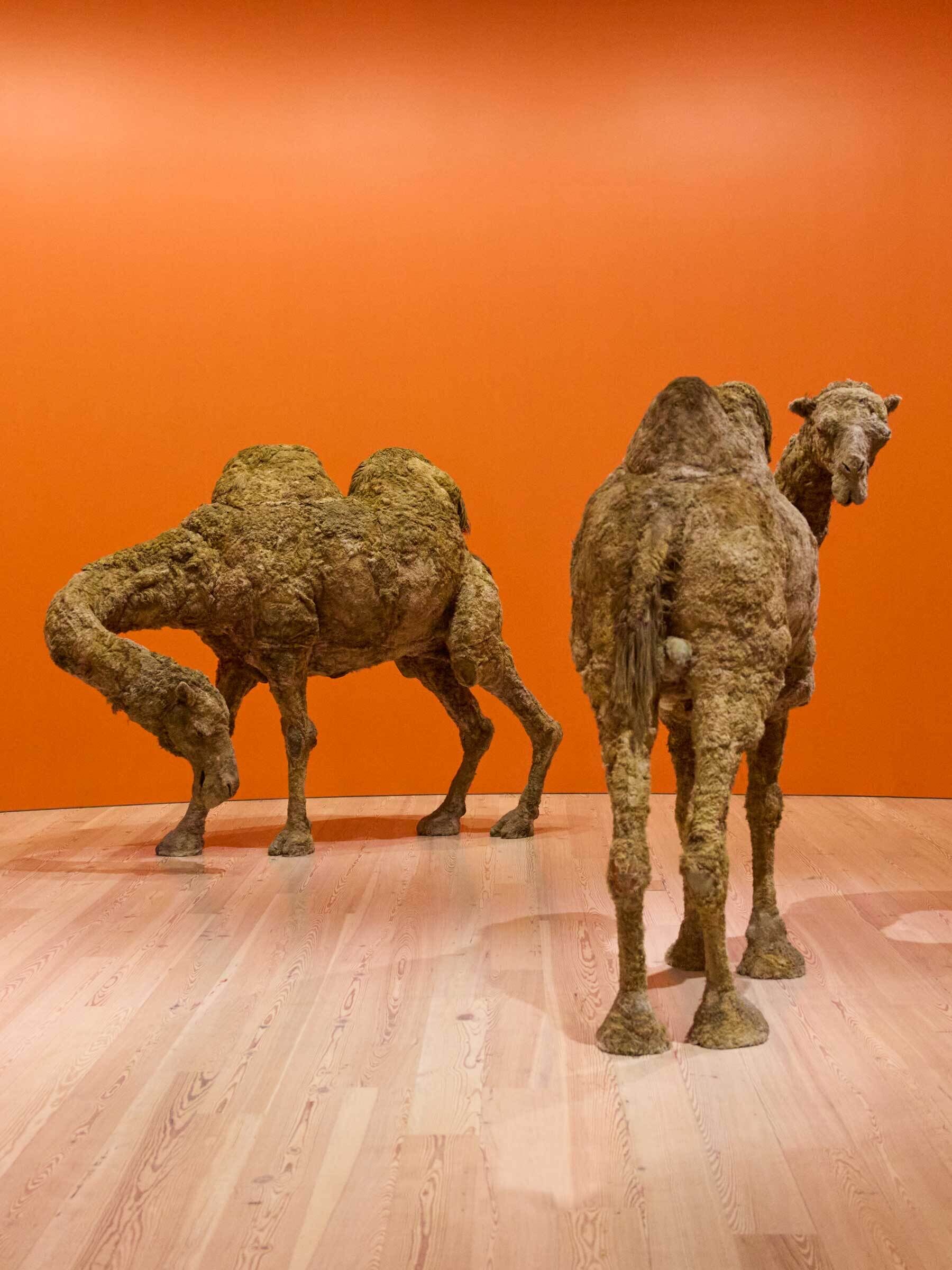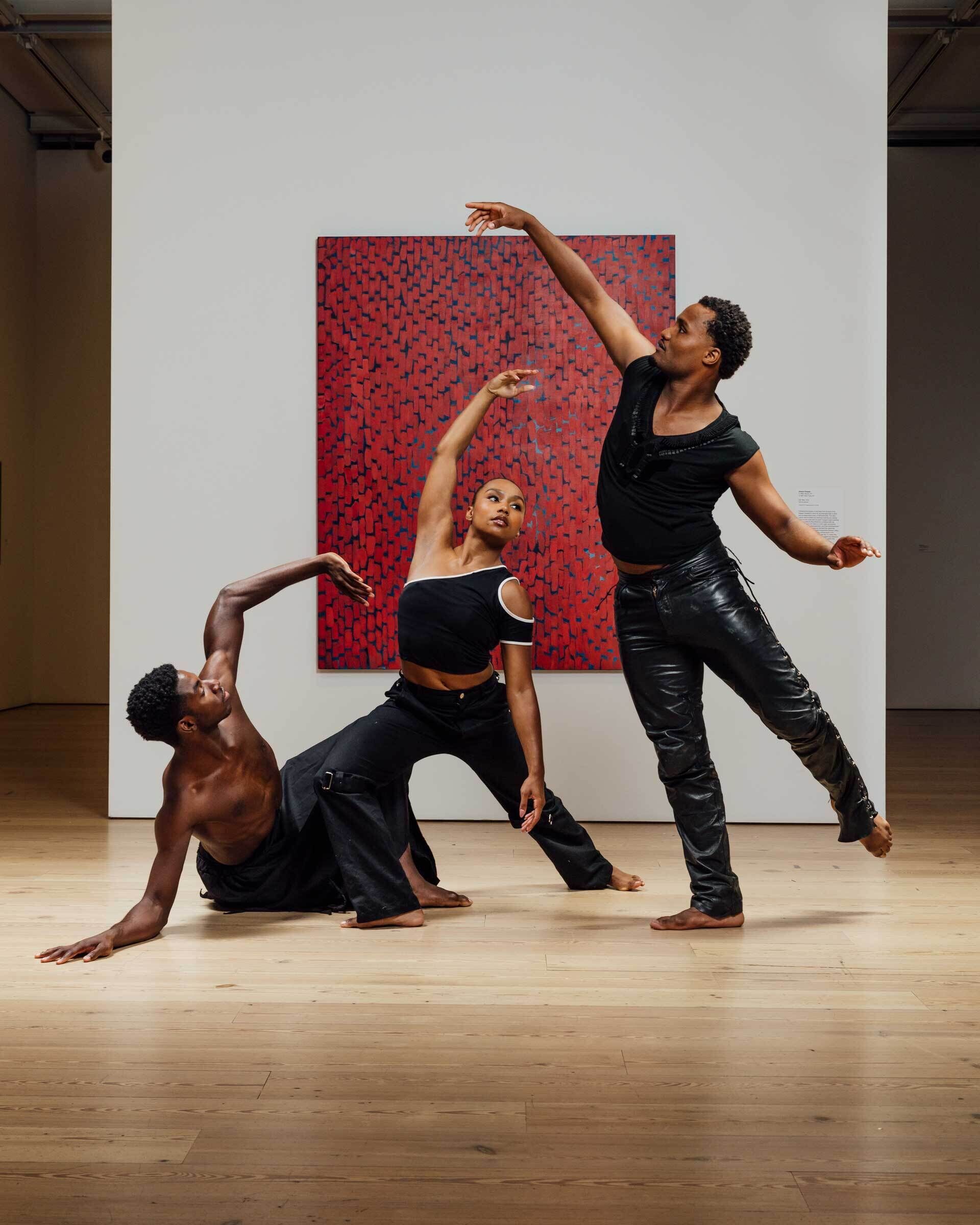Betye Saar
1926–
Working in assemblage, installation, and printmaking, Betye Saar has spent much of her life transforming discarded objects. Her work combines a shamanistic sensibility and social conscience with the lineage of Dada and Surrealist collage. A 1967 exhibition of Joseph Cornell’s assemblage boxes had a profound impact on Saar, conveying the idea that a new context for an object could alter its meaning. This transformative ability of assemblage surfaces in Saar’s political sculptures from the late 1960s and early 1970s, which make use of objects and photographs portraying degrading stereotypes of African Americans. Saar used images of pervasive cultural constructs such as Aunt Jemima and Little Black Sambo in order to access a painful but still relevant part of history, while at the same time reclaiming and re-empowering these iconic figures.
I’ve Got Rhythm confronts racism by presenting fragments of its history. Here, the image of a tap-dancing, tambourine-playing minstrel is pasted to the exterior of a metronome inside of which are collaged a photograph of a white crowd standing under a tree and newspaper headlines about lynchings. The artist has circled one that reads: “Lynched After Refusing to Dance on White’s Command.” A black skeleton and an American flag are attached to the metronome’s arm. The metronome and allusion to George Gershwin’s popular jazz standard in the title asks viewers to consider the legacy of racial oppression embedded in the stereotype of the minstrel. By juxtaposing these references to entertainment with evidence of racial violence, the artist exposes the stereotype as a more insidious and long-lasting form of oppression.
Dana Miller and Adam D. Weinberg, Handbook of the Collection (New York: Whitney Museum of American Art, 2015), 334.
Introduction
African-American sculptor, printmaker, and installation artist from Los Angeles, California. She received a B.A. from UCLA and a M.A. from California State University, Long Beach.
Country of birth
United States
Roles
Artist, assemblage artist, graphic artist, mixed-media artist, sculptor
ULAN identifier
500110489
Names
Betye Saar, Betye I. Brown
Information from the Getty Research Institute's Union List of Artist Names ® (ULAN), made available under the ODC Attribution License. Accessed December 19, 2025.



